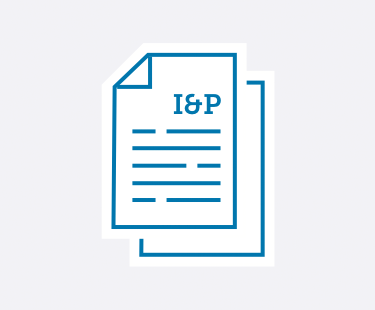

Learn practical strategies to handle emerging trends and leadership challenges in private schools.
No matter if you’re a School Head, Admission Director, Development Director, Board member, or any other private school administrator—Ideas & Perspectives®, ISM’s premier private school publication, has strategic solutions for the pervasive problems you face.
- Tuition not keeping pace with your expenses? In I&P, explore how to use strategic financial planning to create your budget and appropriately adjust your tuition.
- Enrollment dropping off? Discover how to implement the right admission and enrollment management strategies that engage your community—and fill your classrooms.
- Trouble retaining teachers? Learn how you can best support your teachers using ISM’s Comprehensive Faculty Development framework. Your faculty members will become more enthusiastic about their roles—which ultimately improves student outcomes.
- Fundraising campaigns not as successful as you’d hoped? Implement ISM’s practical advice and guidance to build a thriving annual fund, construct an effective capital campaign, and secure major donors—no matter your community size or location.
- Not sure how to provide professional development—for you and your staff? Learn ways to develop and fund a successful professional development strategy. You can improve teacher-centered satisfaction and growth, which in turn strengthens student-centered learning.
- Problematic schedule? You can master the challenges of scheduling with the help of ISM’s practical advice, based on our experience with hundreds of schools and our time-tested theories.
- And so much more.
I&P has shared targeted research, up-to-date insight, and sound theory with school leaders since 1975. More than 8,500 private school decision-makers find the answers to their schools’ administrative and governance matters in our advisory letter. We give you the strategic answers you need.
As an ISM Silver or Gold member, you not only receive issues online and in print 10 times a year, but you have access to 900+ articles in our web archive. Need help? It’s at your fingertips! Learn more and sign up for ISM's membership here.
Search
See the articles from our latest issue of Ideas & Perspectives.
The ISM X and the Fourth Iteration of the Stability Markers
Volume 39 No. 12 // September 22, 2014
The ISM X™ is a geometrical arrangement of the ISM Stability Markers® that comprise the Fourth Iteration. The ISM X shows how the 18 Stability Markers relate to each other and how they combine to produce two critical outcome variables—(1) the interrelation of cash reserves, debt, endowment; and (2) enrollment demand in excess of supply. As School Head, you may wish to become conversant with this teaching tool as a means of communicating more effectively your school’s efforts to position itself strategically in your marketplace.
1. Already a member? Click here to login.
2. Not a member? Click here to become a member.
3. Not sure? We'll help you figure it out.
The Admission Office in the Fall: Time to Reassess
Volume 39 No. 12 // September 22, 2014
While the beginning of each school year may be the “low point” of admission activity, it can be the “high point” of reassessment and planning. Use this time to prepare for the coming admission season. Review the last three years’ inquiry-to-enrollment statistics. Have there been changes in the inquiry pattern? Are people inquiring at different times than in the past? Are there discernible grade-level or division trends? Should the admission events placed on the calendar last spring be rescheduled at times that match the new inquiry patterns? You may have to readjust your strategies to reflect changes in your market.
1. Already a member? Click here to login.
2. Not a member? Click here to become a member.
3. Not sure? We'll help you figure it out.
The Rhetoric of Rigor
Volume 39 No. 12 // September 22, 2014
“Academic rigor” is heralded as a central tenet of a quality academic experience. Schools tout it. Parents want it. Governments legislate it. The 1983 report, A Nation at Risk, sought to establish that the U.S. education system was enmeshed with mediocrity and called for increased academic rigor as the antidote. More than 30 years later—and as evidenced by the frequency with which “rigor” or “rigorous” appears on public and private school websites and strategic initiatives—“rigor” is still perceived to be a prime mechanism by which schools might improve student achievement.
1. Already a member? Click here to login.
2. Not a member? Click here to become a member.
3. Not sure? We'll help you figure it out.
Noncustodial Parent Policies
Volume 39 No. 12 // September 22, 2014
With today’s increasingly varied family structures, many private-independent schools find themselves grappling with the issue of how to deal with noncustodial parents. No school can afford to be without a policy that governs the release of information to students’ natural parents and sets rules for in-school visitation, after-school pick-up, and the like by natural, but noncustodial, parents.
1. Already a member? Click here to login.
2. Not a member? Click here to become a member.
3. Not sure? We'll help you figure it out.
Hiring, Preparing, and Training Staff for Your Summer Program
Volume 39 No. 11 // September 2, 2014
Your school’s summer program is now over and you are evaluating the program’s successes and failures as you begin planning for next summer’s sessions. As Summer Program Director, you know the key to a successful summer program, as in any other school curriculum, is its staff. But hiring for the summer program requires a different outlook than hiring for the regular school year. These differences might seem obvious. Creating a relationship with students and teaching for a week is different from having a year to achieve results. If you’re teaching an academic summer program, teaching for 3–4 hours a day for four weeks is different from teaching for 50 minutes a day all year long. The key objective of having fun is not as front and center during the school year as in the summer.
1. Already a member? Click here to login.
2. Not a member? Click here to become a member.
3. Not sure? We'll help you figure it out.
Appropriate Tuition Adjustment: Recasting Financial Figures, 2014–15
Volume 39 No. 11 // September 2, 2014
Each fall, ISM publishes a set of conversion factors to facilitate recasting previous tuitions into current dollars. (See the accompanying table.) We continue to use the Urban Consumer Price Index (CPI-U).1 However, we also realize the CPI-U does not completely reflect expenditures in private-independent schools; it can only serve as a base figure. There are compelling arguments for adjusting your tuition at a rate 2% above the overall inflation rate. The CPI has a built-in “productivity factor.” It assumes the workforce is increasingly productive as computers, streamlined mechanical devices, and other laborsaving developments provide greater output with fewer personnel. Education, however, differs from industries in that it is people-intensive and not truly “product”-driven. Education cannot offset the total true effects of inflation by increased efficiency—the classroom still basically consists of a teacher and a group of students. If more students enroll, we create more sections with more teachers. Furthermore, even as the demand for additional programs (and teachers) occurs, schools tend not to remove any of the standing programs to lessen the budgetary crunch. Costs go up even as productivity remains static.
1. Already a member? Click here to login.
2. Not a member? Click here to become a member.
3. Not sure? We'll help you figure it out.
Highlight Your Teachers’ Out-of-School Achievements
Volume 39 No. 11 // September 2, 2014
A private-independent school is often described as a “community of learners,” and a main tenet of a school’s mission is to instill a love of “lifelong learning.” An excellent display of this conviction is that your teachers spend time improving themselves (professionally and otherwise) outside the classroom. How are you highlighting your teachers’ achievements, both inside and outside the walls of your school?
1. Already a member? Click here to login.
2. Not a member? Click here to become a member.
3. Not sure? We'll help you figure it out.
Strategies for Recruiting Home-schoolers
Volume 39 No. 10 // August 11, 2014
Judging from its incredible growth in the past two decades, home-schooling has clearly become more acceptable for parents seeking alternative education for their children. Like charter schools, home-schooling groups can be perceived as competition for private-independent schools. However, it may be more advantageous to cooperate with home-schoolers than to compete with them. Although students of all ages are educated at home, many are younger children who eventually attend conventional schools. Home-schooling parents typically have views on education that mirror those held by your school’s parents, and their children often prove to be exemplary private school students. With this in mind, consider working with local home-schooling groups as you would collaborate with feeder schools.
1. Already a member? Click here to login.
2. Not a member? Click here to become a member.
3. Not sure? We'll help you figure it out.
Faculty Compensation, 2013–14: Day School Salaries
Volume 39 No. 10 // August 11, 2014
In our continuing research on the competition for talented, mission-appropriate teachers for private-independent schools, ISM annually surveys a random sample of I&P subscriber schools about teacher and administrator compensation.1 This year, 262 schools responded to the survey. The following article focuses on the survey results regarding the salaries of day school teachers. A competitive faculty salary structure is critical in a school’s ability to sustain programmatic excellence over time. Competitive salaries enable you to retain members of your faculty and hire new teachers. Consider the following results of our survey—and where your school falls in the scope of compensation variables.
1. Already a member? Click here to login.
2. Not a member? Click here to become a member.
3. Not sure? We'll help you figure it out.
A Call for Deliberate Heterogeneity
Volume 39 No. 10 // August 11, 2014
The expression “deliberate heterogeneity” reflects ISM’s commitment to private-independent schools truly delivering each school’s unique mission to its unique students (i.e., deliberately, and not being uniform). The term is defined as a school’s desire to articulate and exemplify its mission distinctives in the marketplace, and thus its confidence in being able to appeal to that marketplace through the power of its own voice. The expression reflects our concern that our schools are being unduly influenced by an educational movement toward homogeneity that strikes at the core of an independent school’s character and competitive position. We introduce the phrase “deliberate heterogeneity” to galvanize schools, one at a time, to take on their mission responsibility and deliver it in creative and innovative ways. Heterogeneity includes your school’s values, unique history, culture, and circumstances influencing your mission-in-action.
1. Already a member? Click here to login.
2. Not a member? Click here to become a member.
3. Not sure? We'll help you figure it out.


